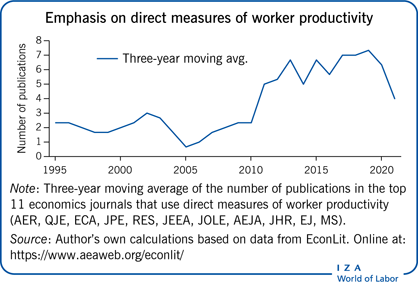Elevator pitch
Measuring workers’ productivity is important for public policy and private-sector decision-making. Due to the lack of a general measure that captures workers’ productivity, firms often use one- or multi-dimensional performance measures, which can be used, for example, to analyze how different incentive systems affect workers’ behavior. The public sector itself also uses measures to monitor and evaluate personnel, such as teachers. Policymakers and managers need to understand the advantages and disadvantages of the available metrics to select the right performance measures for their purpose.

Key findings
Pros
Performance measures provide detailed information about worker productivity.
To inform about a wide range of questions, such as how incentives work, how peer effects operate, or how workers accumulate human capital, performance measures can be useful.
Reliable performance measures are needed to design appropriate contracts and improve productivity.
Automatization creates an increasing number of performance metrics across low- and high-skilled jobs, as well as for jobs in the private and public sectors.
Cons
There is no universal definition of worker productivity; measures of worker productivity typically depend on the setting in which they are collected.
Worker productivity is usually multidimensional, measures of worker performance do not always capture all of its dimensions.
If policies are based on the wrong performance measures, distortions can create negative effects on worker productivity.
For settings in which performance is only observable at the team level, it is not always possible to estimate individual contributions to team productivity.